Cementerio del Este: Life Reflected in Stone and Sky 🇻🇪
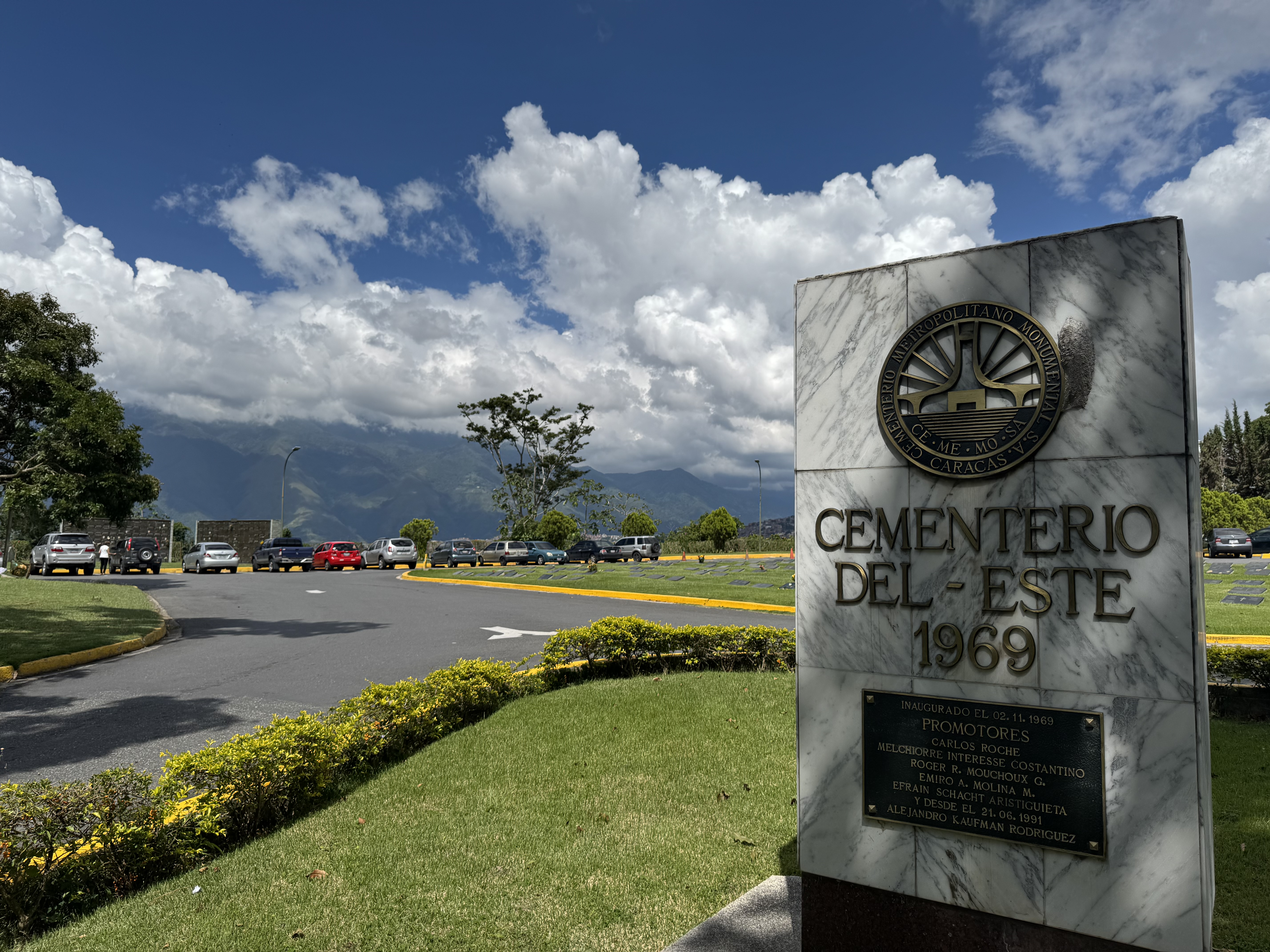
Cementerio del Este, Caracas, Venezuela, October 2025
Just a week before All Saints’ Day—my favourite celebration back in Poland—I found myself wandering through the quiet paths of Cementerio del Este in Caracas. Perhaps it is that Polish reverence for 1 November, with its glowing cemeteries lit by candlelight, that instilled in me a love for these places of rest. Over the years, I’ve made it a quiet tradition to visit cemeteries whenever I travel—whether in Lisbon, Kraków, Luanda or Bangkok. Each one whispers its own story.
Cementerio del Este surprised me. Spread across the rolling hills of La Trinidad, it feels modern, almost minimalist. The flat stones, neatly mown grass, and geometric layout reminded me more of how I imagined North American cemeteries might look—open, ordered, facing the sky rather than enclosed by shadow. There are no gothic tombs here, no moss-covered angels or iron fences—just light, space, and a stunning view of Caracas, stretching out like a living mosaic in the valley below.
I walked slowly, letting the names, dates, and faces on the gravestones speak. Some offered smiles from old black-and-white portraits; others left only carved names to the sun. I paused often. These visits never feel like meditations on death—rather, they feel like celebrations of life. And this one was no different.
When my friend and I left the cemetery, neither of us felt heavy. Quite the opposite. We followed the day into a nearby restaurant and were gifted with an unexpected moment of joy: a group of dancers performing traditional Venezuelan folk routines, their music full of rhythm and colour. We stayed for a while, clapping, smiling, soaking in the joy of it all.
It was the perfect way to honour life—a quiet morning among the resting, followed by music, dance, and laughter among the living.
Click here to visit the album: 🕯️ Cementerio del Este: Life Reflected in Stone and Sky
White Towns, Blue Waters, Golden Days 🇵🇹🇪🇺
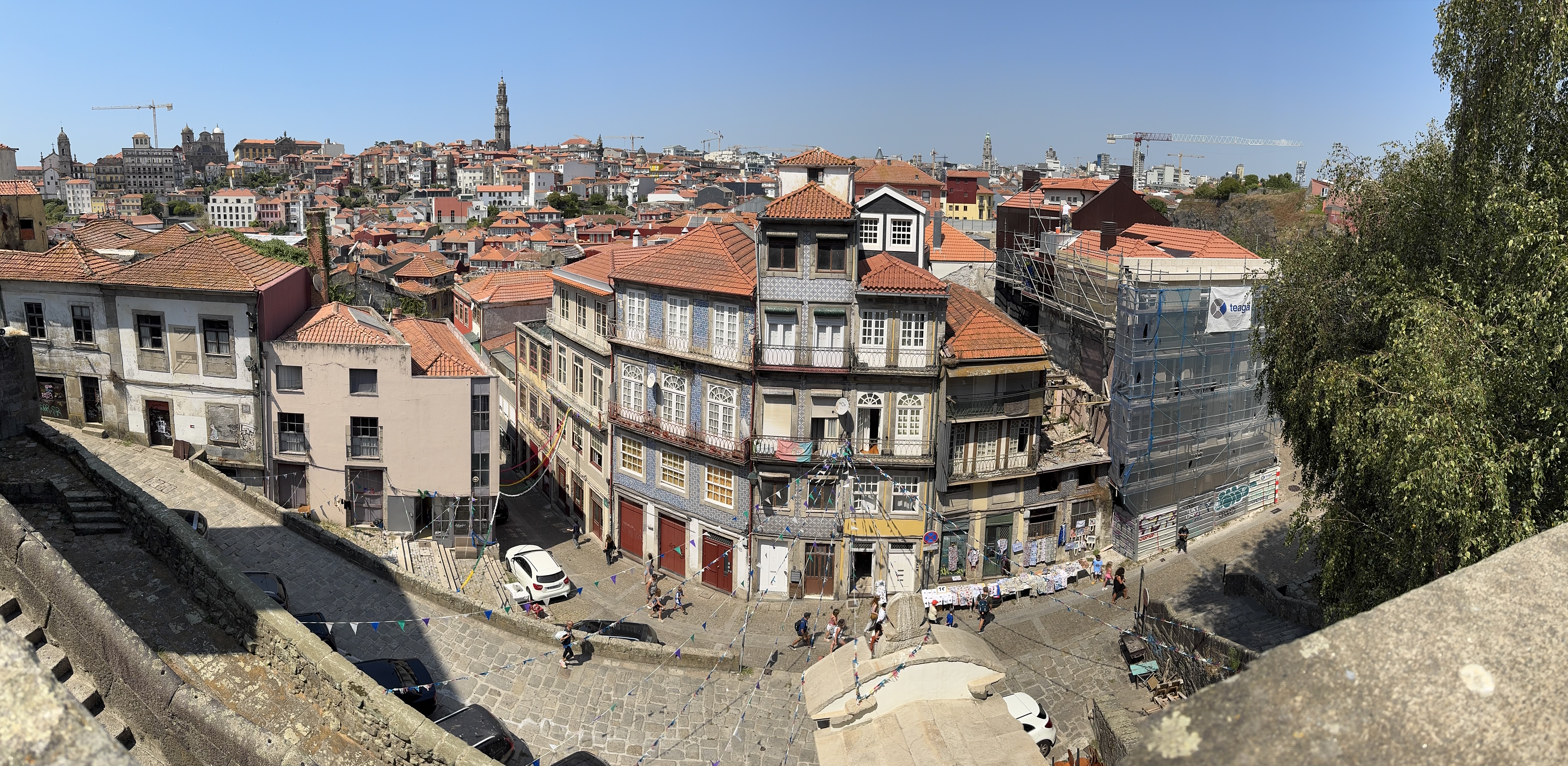
Centre of Porto, Portugal, August 2025
Nine days under the Portuguese sun, wrapped in the smell of the sea, the shimmer of blue-and-white tiles, and the joy of shared adventures.
This trip wasn’t just about geography — it was about companionship, discovery, and seeing familiar places through the fresh, astonished eyes of others. I travelled with a beautiful group of people — Leo, Giovanni, Kate, Paulo, Maria, and Mahendra — and each one brought something special into the light of those days.
For Leo and Giovanni, it was their first time in Portugal. That fact alone gave the trip an extra glow. Every street we walked, every meal we shared, every view that opened before us — it all felt like a gift being unwrapped together.
We began in Óbidos, that fairytale town of stone and flowers, with its ancient castle walls embracing whitewashed houses. It always feels like stepping into another century. We wandered its alleys, climbed its ramparts, and paused to sip ginjinha served in tiny chocolate cups — a small but joyful ritual of this place.
From there, we explored the coastal villages of central Portugal — Foz do Arelho, São Martinho do Porto, and others nestled around forested hills and stretches of sand. The air was salty and warm, the Atlantic wild and playful. There were long drives past pine groves and golf greens, unexpected viewpoints where you could watch the sky melt into the water, and cafés where time politely slowed down.
With Giovanni, I returned to Nazaré, the town where land and sea seem locked in eternal dialogue. Even without the record-breaking waves of winter, Nazaré pulses with elemental power. Fishermen’s boats bobbed in the harbour, their colours faded by salt and sun. We climbed to Sítio, the clifftop district, and looked out over the vastness. It was quiet, but the roar of the ocean still echoed in the imagination.
Later, we went inland — deep into Alentejo, to visit Maria and Mahendra. Their warm welcome was matched by the calm of the landscape: undulating hills, vineyards, cork oak trees scattered like dots across golden fields. Here, the world seems to breathe more slowly. We shared long meals, ripe conversations, and moments of silence that felt as nourishing as the food.
And then, the jewel waiting at the north — Porto.
My first visit, and what a wonder it was.
Arriving in Porto felt like stepping into a living painting — steep hills covered in terracotta roofs, the Douro River gliding gracefully below, and the constant sound of footsteps on stone. The city is built of layers: Romanesque cathedrals, Baroque churches, narrow staircases, street art, the smell of grilled sardines, the echo of fado.
We walked the Ribeira, the historic riverfront district, with its labyrinthine charm and centuries-old facades. The colours of the buildings — ochres, pinks, deep reds — danced in the sunlight. From there, we crossed the iconic Dom Luís I Bridge, an architectural marvel designed by a disciple of Eiffel, and admired the view back across the river: the heart of Porto clinging to the hills like a theatre set.
There was something profoundly romantic and melancholic about Porto — a kind of noble fatigue, as though the city had seen too much beauty to rush anymore. The azulejos, Portugal’s famous blue tiles, told stories on every corner — saints, ships, angels, and kings — and each church seemed more intricate and moving than the last.
We tried Port wine at its source, tasted meals that were simple and rich with memory, and sat on high balconies watching the city exhale with the river.
Porto was a revelation. To see it for the first time, in the company of people I care about, was to understand why it leaves such a mark on the soul.
Across these nine days, we covered coasts and castles, markets and mountains, and the small in-between places where the most unexpected magic waits. We swam in cold Atlantic waves, got lost in sleepy villages, sat in silence under fig trees, and celebrated life with spontaneous toasts over fresh seafood and warm bread.
This wasn’t just a holiday. It was a patchwork of joy, sewn together by good people, golden light, and the sheer luck of being alive in such a moment.
I return now, heart full and grateful.
Grateful for the laughter, for the wide skies, for the way Portugal always manages to show me something new — even after all these years.
Click here to access the album.
Madrid in Transit: A Brief Encounter with the Spanish Capital 🇪🇸🇪🇺
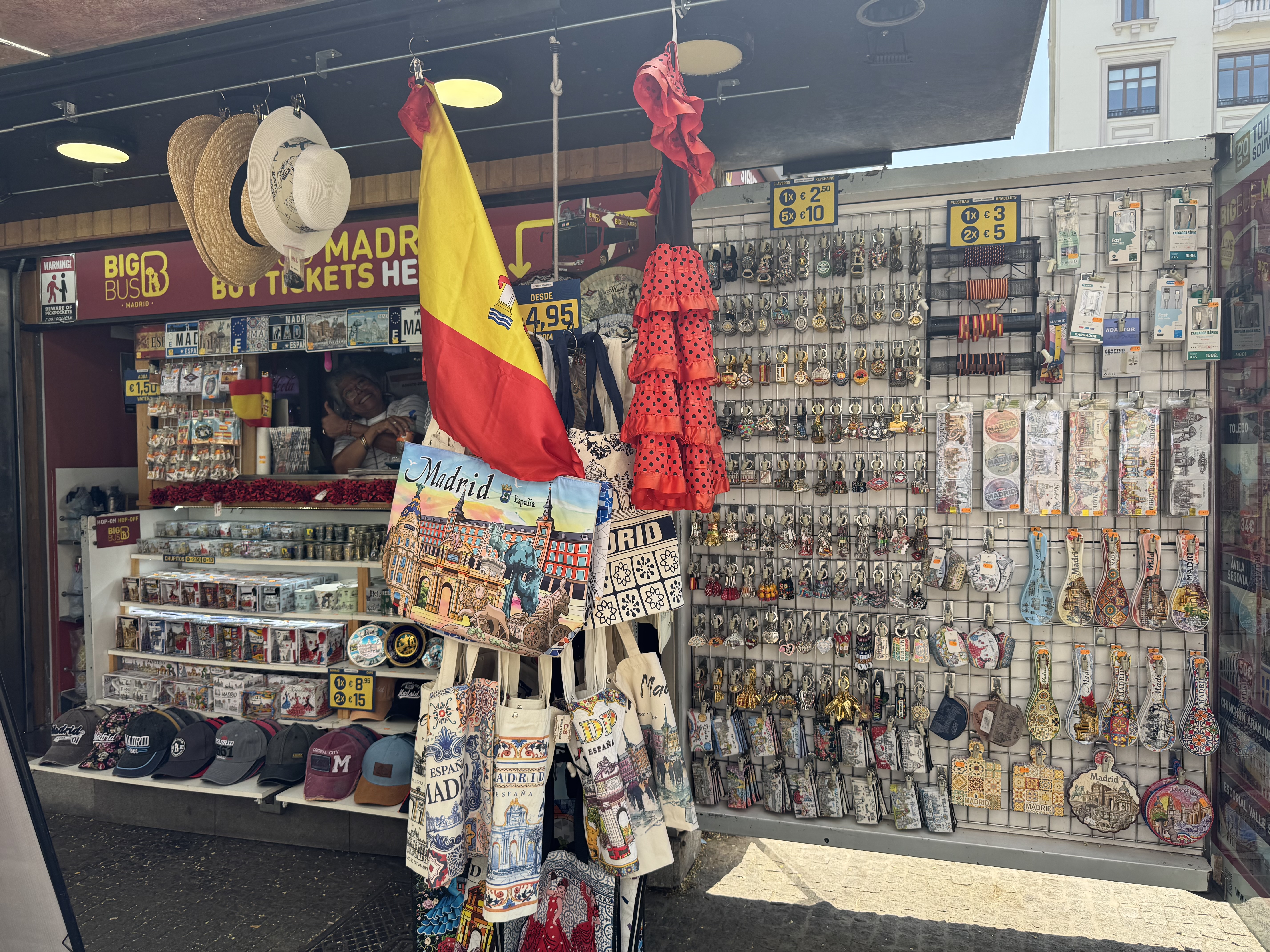
Centre of Madrid, Spain, August 2025
In mid-August 2025, I set off on a journey to Portugal with my Venezuelan friend Giovanni. As fate would have it, our route included a stopover in Madrid—and what could have been just an airport layover turned into a beautiful five-hour adventure through the Spanish capital.
After landing at Barajas, we were joined by our dear friend Leo, another Venezuelan who had arrived earlier. The three of us hadn’t been together since our Polish-Slovak escapades earlier in the summer, so it already felt like a reunion worth celebrating.
Eager to make the most of our time, we took a taxi straight to the Banco de España metro station, right at the edge of Plaza de Cibeles. From there, we began a leisurely walk westward, soaking in the grandeur of Madrid’s most iconic boulevard—Calle de Alcalá.
We passed the Cibeles Fountain, where the goddess Cybele rides her chariot drawn by lions, watched over by the majestic Palacio de Cibeles, once a post office, now the city hall. From there, we continued along the bustling Gran Vía, often called the Spanish Broadway, lined with regal buildings, theatres, rooftop terraces, and classic shopfronts that give Madrid its unmistakable urban charm.
Despite the scorching summer heat, Giovanni was enchanted—it was his first time in Spain, and you could see the wonder in his eyes as we moved through the city’s heart.
We paused to admire the Metropolis Building, its ornate dome glinting under the sun, then meandered past Puerta del Sol, alive with performers, tourists, and the iconic clock tower of the old post office—the symbolic centre of Spain. From there, we strolled through the cooler side streets until we reached the elegant Plaza Mayor, where we stood beneath the colonnades, briefly escaping the sun and absorbing the square’s historic atmosphere.
Finally, we reached the Royal Palace of Madrid, standing proudly over the city, with the Almudena Cathedral just beside it. The views from the palace promenade were lovely—soft golden light, distant hills, and a city that felt both grand and lived-in.
Though our time was brief, we had truly walked through Madrid’s historic and architectural heart, weaving together laughter, curiosity, and the delight of shared discovery. After one last cold drink, we took a taxi back to Barajas, refreshed and grateful.
That evening, as our flight took off toward Lisbon, we looked back on a perfect afternoon—a mini adventure tucked between two countries, rich with friendship, sunshine, and the timeless beauty of Madrid.
Click here to access the album.
Colours, Clouds and Kindness – A Saturday Escape from Caracas 🇻🇪
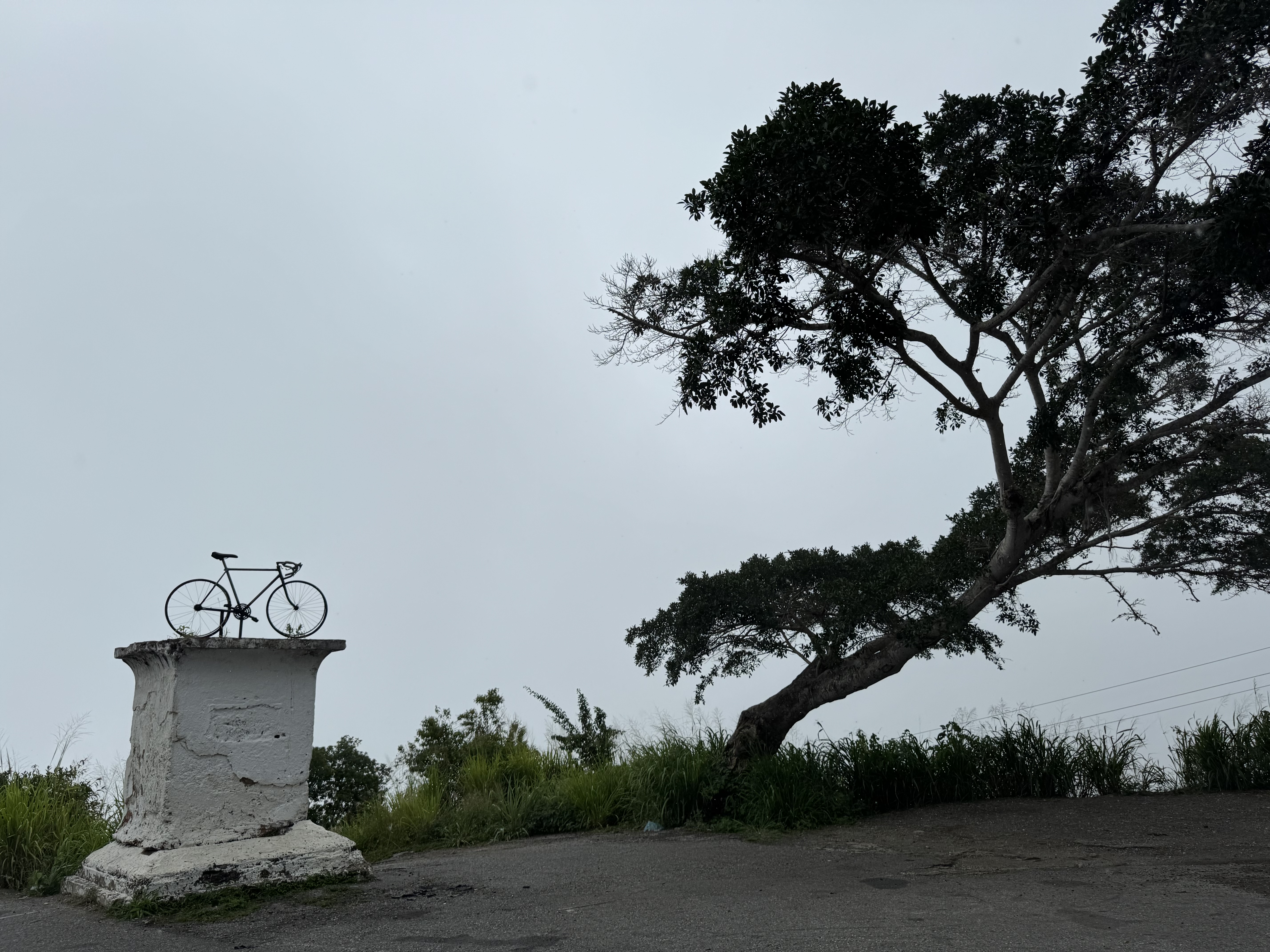
Discovering Avilla Hills, Caracas, Venezuela, June 2025
It’s nearly the end of June 2025, and today—on a calm and sunny Saturday off—my Venezuelan friend Giovanni and I decided to break away from the routine. Rather than heading to the familiar corners of Caracas, we picked a route that promised something a little less predictable: the old road to La Guaira, known locally as La Carretera Vieja.
What began as a spontaneous road trip became one of the most memorable days I’ve had in Venezuela—filled with colour, contrast, warmth, and surprising human connection.
Winding Through Villages Above the City
As we left the city centre and started the winding climb into the hills, we entered a different world. The barrios and villages scattered along La Carretera Vieja each told their own story—places like El Limón, La Llanada, and El Manantial. These aren’t glossy postcard towns, but they are alive with character.
Homes painted in rich blues, reds, and greens climb the steep hills like a mosaic. Walls are adorned with hand-painted signs and murals—some joyful, some political, some simply decorative. In the dusty streets, children played, dogs dozed in the shade, and neighbours chatted over low garden fences. There’s no denying the poverty, the worn infrastructure, the challenges people here face. And yet, there is a sense of community and presence that many wealthier places could only dream of.
There’s music spilling from windows, aromas of frying arepas and coffee drifting in the air, and every so often, a breathtaking view opens over the lush green hills or even the sea far below. Nature here is wild and magnificent—trees heavy with fruit, clouds drifting low through the ravines, birds darting between rooftops. It’s a part of Caracas and its outskirts that many rarely see—but should.
From a Map to the Sea – Discovering Baltic Restaurant
As we finally descended toward La Guaira, we started thinking about where to eat. That’s when Google Maps led us to an unexpected gem—Baltic Restaurant.
The name immediately caught my attention. Intrigued (and feeling slightly homesick for the north), we followed the directions and soon found ourselves in a small, charming spot perched above the coast, with wide-open views of the Caribbean Sea. It felt quiet and unpretentious—an insider’s place rather than a tourist stop.
Inside, the décor was simple but tasteful. As soon as I met the owner, I had to ask: “Why Baltic?” He smiled and explained that he had once visited Poland, and that the Baltic Sea had left a deep impression on him. He loved its calmness, its colours, and the memories it evoked. That’s why he named the restaurant after it.
When I told him I was Polish, he grew visibly excited and warmly welcomed us. We talked for a while, and before we left, he even gave me a pair of wine glasses with the restaurant’s logo—a generous and touching gesture of connection across continents.
The food? Absolutely delicious. We had grilled seafood, crispy plantains, and fresh salads, accompanied by cold drinks and the soft sound of waves. The view was cinematic—mist hanging over distant hills, the water shimmering in the sun, fishing boats bobbing gently offshore. It felt like a reward for getting a little lost earlier in the day.
A Day to Remember
We made our way back to Caracas slowly, the hills turning golden in the afternoon light. Giovanni and I couldn’t stop talking about the villages, the landscapes, and the warm people we’d encountered along the way. What struck us both was that even in places marked by hardship, people smiled, offered help, and lived with unmistakable dignity and joy.
La Carretera Vieja gave us more than just a scenic drive—it gave us a window into the lives of people often overlooked, and reminded us how human stories are often found in the least expected corners of the map.
And to think it all started with a spontaneous drive and a Google Maps suggestion.
Click here to access the album.
From Nowy Sącz via Lisbon & Amsterdam to Caracas – Closing a Beautiful Journey 🇵🇹🇳🇱🇵🇱🇪🇺
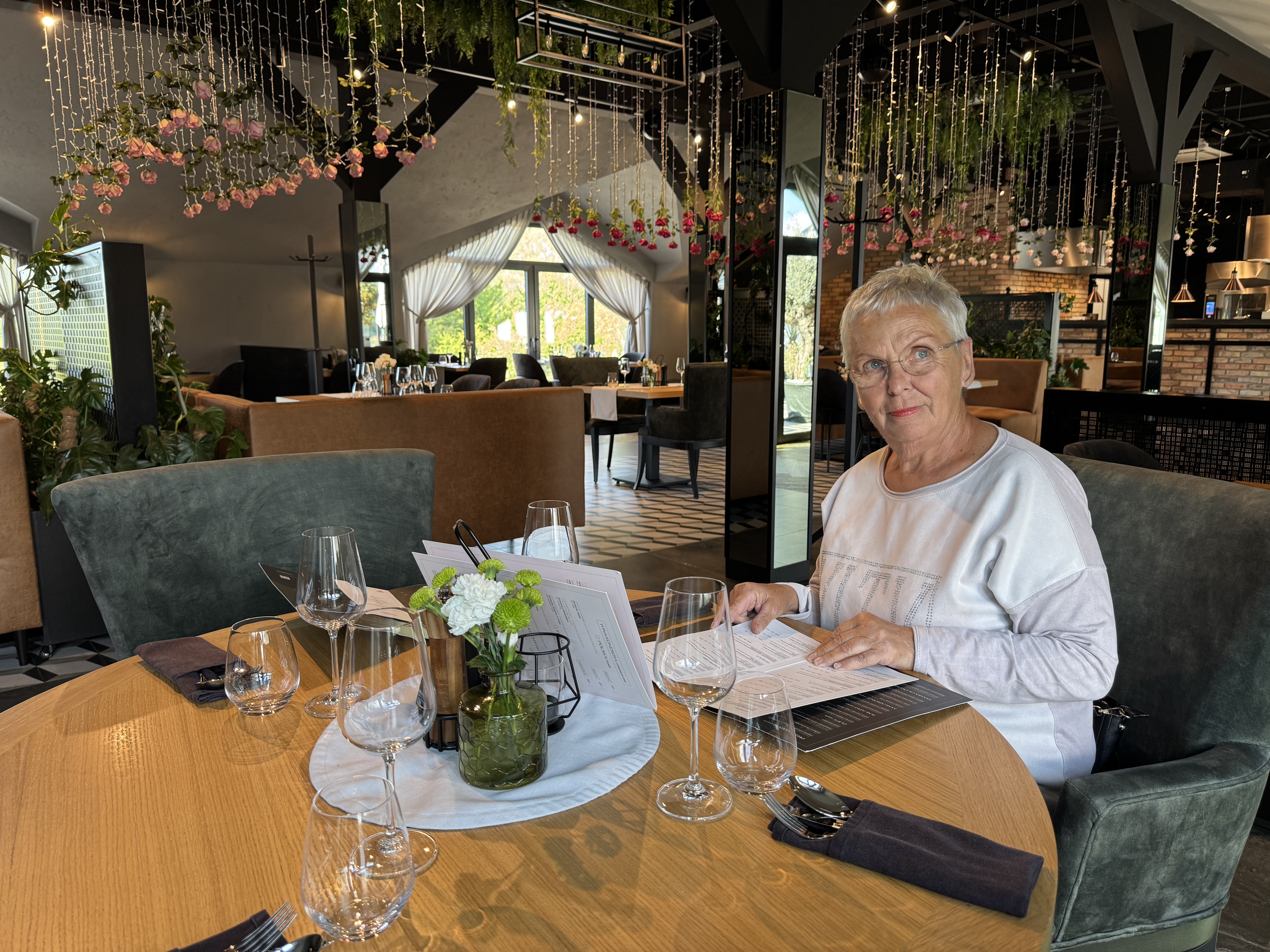
Dinner with Mum, Stary Sącz, Poland, May 2025
After several unforgettable weeks travelling through Poland, Malta, Uzbekistan, Kazakhstan, Slovakia, Czechia, and Portugal, it’s time to return to Caracas. These final days of the trip have been filled with quiet emotion—meals with Mum, farewell walks through Nowy Sącz, a last visit to Paweł and Kasia, and a perfect pause in Lisbon before boarding the flight back to Venezuela.
Yesterday, Mum and I had our last meal together in a small restaurant in Stary Sącz. The atmosphere was peaceful, the conversation warm, both of us trying to savour every moment before goodbye. We wandered through town afterwards, soaking in the spring air and that soft melancholy that always comes with parting.
These last days were filled with small rituals: shopping for a few last things, one more stop by the river, sitting on our favourite bench in the sun. The ordinary became sacred simply because it was shared.
But this journey wasn't only about goodbyes. It’s been a spring rich with discovery and joy.
🇵🇱 Poland: Our time in Poland was deeply grounding. From the charming spa town of Krynica-Zdrój to the familiar comforts of Nowy Sącz, it felt good to slow down and be home. We explored Kraków during Constitution Day, wandered through Wawel, and shared long lunches in the old town. Spring in Poland is always special—alive, bright, and hopeful.
🇲🇹 Malta: From Kraków, we flew to Malta for three full days of Mediterranean sun and history. Valletta’s golden stone streets, the vibrant harbour of Marsaxlokk, and the clear waters of Gozo and the Blue Lagoon left us speechless. Mum especially loved the contrasts of Malta—how modern life wraps itself gently around ancient sites, and how every corner holds a story.
🇺🇿🇰🇿 Uzbekistan and Kazakhstan: Then came Central Asia—Tashkent’s calm elegance, Samarkand’s majestic mosques and madrasas, Shymkent’s sincerity and soul. For both of us, it was a completely new region, and we were amazed at every turn. Registan Square, the Shah-i-Zinda necropolis, the lively conversations with our guide Larisa in Kazakhstan—these are moments I will never forget. Mum kept saying she never imagined she would see these places, and watching her light up with wonder was one of the greatest parts of the trip.
🇵🇱🇸🇰🇨🇿 More time in Poland, Slovakia and Czechia: Back in Poland, we welcomed Leo for a few days—a visit that added a special layer of joy to the entire holiday. It was his first time in Poland, and we were eager to share some of our favourite places with him. We spent time together in Kraków, walked along the Vistula River, visited Wawel Castle, and introduced him to the vibrant cafés and history of the old town. We also travelled to Morskie Oko, then crossed into Slovakia to hike in the stunning High Tatras. Experiencing the mountains together, surrounded by spring greenery and snow-capped peaks, felt both refreshing and deeply grounding.
We later visited Žilina, a lively and welcoming city with pastel-coloured buildings, wide pedestrian streets, and a laid-back café culture that immediately drew us in. Earlier in the trip, while visiting Cieszyn, Mum and I walked across the Olza River to Český Těšín in Czechia. It was a simple, quiet town—peaceful, local, real. The act of crossing a border on foot and suddenly hearing another language, seeing different signs, and picking up a new rhythm of life added so much depth to our journey. It reminded us how rich and interconnected this region truly is.
🇵🇹🇳🇱 Lisbon & Amsterdam: And finally—Lisbon. Originally planned as a smooth final stop, this part of the journey was affected by flight disruptions. I ended up transferring through Amsterdam, which meant spending many hours at Schiphol Airport and arriving in Lisbon much later than expected. As a result, I had very limited time to go out and explore the city.
Still, I made the most of it. The experience at Amsterdam airport, though long, was not unpleasant—people-watching, wandering through bookshops, and simply taking a breath between chapters of travel. And once in Lisbon, even with the short time, I enjoyed the familiar air of the city, the tiled façades, the Atlantic breeze. It was also my first time travelling with my Portuguese passport, which added a layer of quiet pride and emotion to the experience.
Now, I’m preparing for the long flight to Caracas. I feel rested, filled with stories, and more connected than I’ve felt in a long time. There’s work waiting for me—intense and challenging—but I carry this spring with me now. A reminder of what matters, and how good it is to feel at home in many places.
More soon. For now, thank you, Poland. Thank you, Mum. And thank you to every person and place that made this journey so full of life.
Click here to access the album.
Four Days, Two Friends, Countless Borders 🇵🇱🇸🇰🇪🇺
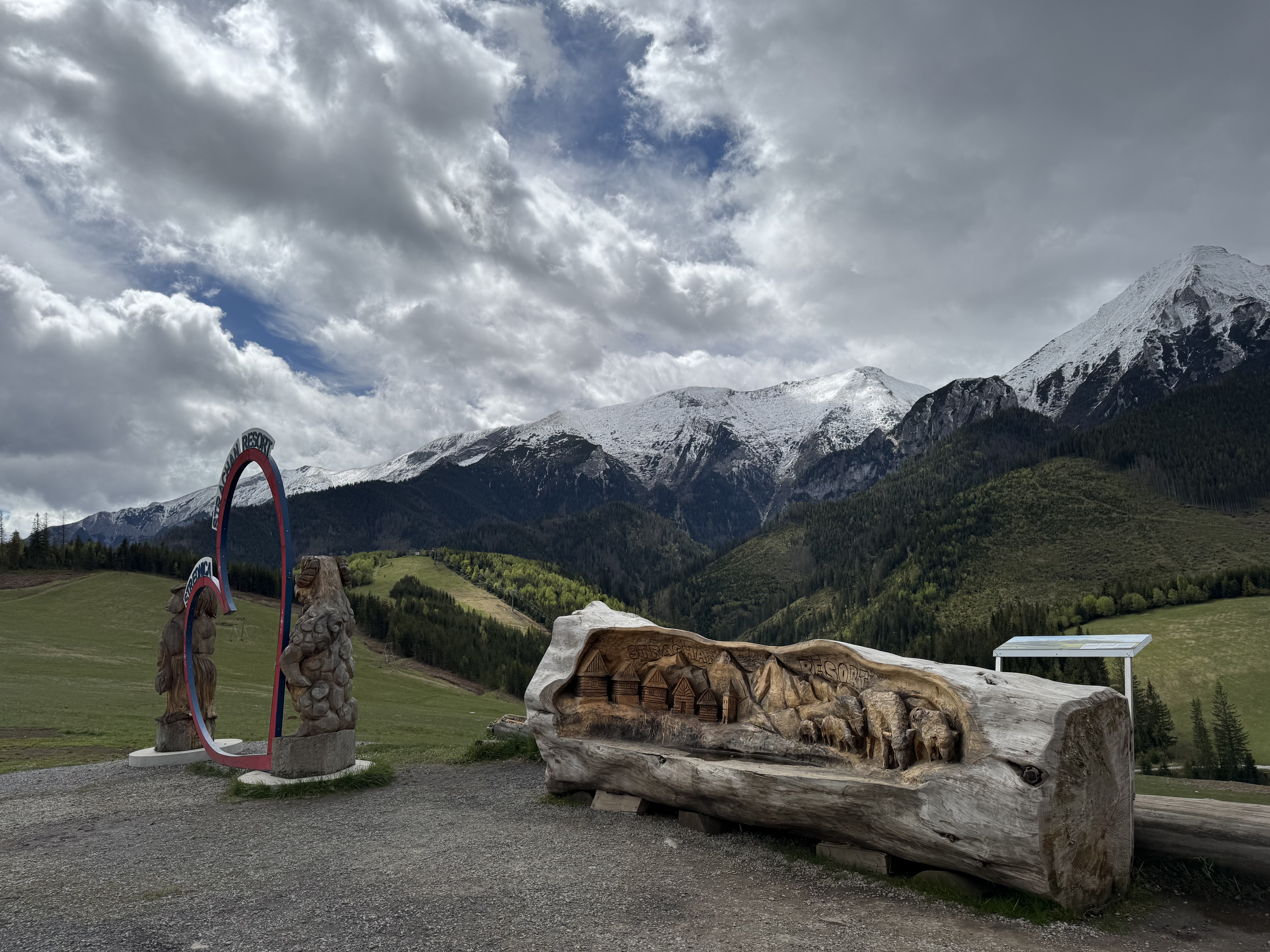
Vysoké Tatry, Slovakia, May 2025
At last! After many conversations, plans, and longings across borders, Leo—my dear Venezuelan friend—finally made it to Poland from Spain. It was a short visit, just four days, but those four days were packed with joy, discovery, movement, and shared moments that we’ll both treasure for years. Welcoming Leo and showing him some of my favourite places in Poland and Slovakia, as well as introducing him to my family, was incredibly special.
He arrived in Kraków, where we spent the first night in a hotel and began our little adventure the following day. The weather was kind to us—sunny, though slightly chilly—and the air carried that late-spring clarity that makes every sight feel even more vivid.
Kraków – Wonder Through History
Our day in Kraków was a revelation for Leo. The Old Town immediately captured his heart. We walked the Royal Route, from the Floriańska Gate to the majestic Wawel Castle, letting the rhythm of centuries-old cobbled streets guide us. St. Mary’s Basilica, with its twin towers and richly decorated wooden altar by Veit Stoss, left Leo in awe. When the hourly trumpet call (hejnał) echoed across the Rynek Główny, I could see in his eyes how deeply moved he was.
Later, we wandered down to Kazimierz, Kraków’s historic Jewish quarter, with its atmospheric streets, old synagogues, and bohemian charm. Kazimierz always feels like a place of memory and resilience. We sat in a quiet café, talked about the layers of history all around us, and enjoyed simply being in a place so full of soul. Leo was visibly enchanted by Kraków, overwhelmed in the best way by its richness and beauty. Watching his reactions brought me a new perspective on a city I know so well—it was like seeing it for the first time again, through his eyes.
Home in Nowy Sącz – Family, Nature and Wooden Churches
From Kraków, we made our way to Nowy Sącz, where we stayed with my Mum—a warm and lively stop in the middle of our travels. I was so happy to introduce Leo to my family, and he was welcomed with the same warmth and curiosity he always inspires.
We quickly moved into exploring the wooden churches of the Lemko region, near the Slovak border—hidden gems scattered around Kamianna, Uście Gorlickie, and Wysowa-Zdrój. These UNESCO-listed wooden churches are masterpieces of Carpathian wooden architecture, built by local communities, often without a single nail, using timber and techniques passed down over generations. Their steep shingled roofs, onion domes, and painted interiors feel at once humble and sacred—reminders of a spiritual world rooted in earth, forest, and tradition. Leo was amazed by their beauty, harmony with the landscape, and their mysterious aura.
Crossing Borders – Bardejov, Krynica, and the Tatras
Our next stop took us across the border to Slovakia, to the spectacular town of Bardejov—a small but exquisitely preserved medieval town, with a UNESCO World Heritage status. Its perfect main square, Gothic St. Egidius Basilica, and colourful merchant houses left a strong impression on both of us. We spent a few lovely hours wandering, talking, and enjoying the rhythm of the town.
Returning to Poland, we stopped in Krynica-Zdrój, one of my favourite spa towns. Even for a brief visit, it was a pleasure to walk through its elegant streets and to show Leo the town’s distinct blend of 19th-century resort architecture and natural beauty.
In the evening, we had a family party at my brother’s house—a wonderful gathering full of laughter, great food, and animated conversation. Leo fit in seamlessly, making friends instantly, and it meant so much to me to see my two worlds—Polish and Venezuelan—connecting so easily.
The following day was all about mountains. We started with the Pieniny region, visiting Czorsztyn and Sromowce Niżne, where we crossed the footbridge over the Dunajec River into Slovakia, arriving at the Červený Kláštor (Red Monastery). It was a magical crossing—simple, symbolic, and filled with joy. Later, we travelled into the Tatra Mountains, visiting Bukowina Tatrzańska in Poland and Vysoké Tatry on the Slovak side. The landscapes took our breath away—majestic peaks, dramatic light, endless sky. It was a highlight of the trip, one of those days that feel timeless.
Leo couldn’t stop smiling. He loved the freedom of moving between countries, and we laughed when we counted: in just four days, he had entered Poland four times and Slovakia three times!
Farewell – Until the Next Time
On the final day, we took it easy. A bit of shopping in Nowy Sącz, some time to rest and chat, and finally, the drive to the airport. Saying goodbye was, as always, a bit bittersweet—but more than anything, I felt grateful. Grateful for these days together, for the chance to share a part of my world with Leo, and for the memories we now carry with us.
Having Leo here in Poland was a joy. I already look forward to more journeys together—more bridges to cross, more cities to explore, more laughs to share. Because when friendship travels, it leaves a trail of light behind.
Click here to access the album.
Green Days of May – Nowy Sącz, Miasto Galicyjskie & Krosno 🇵🇱🇪🇺
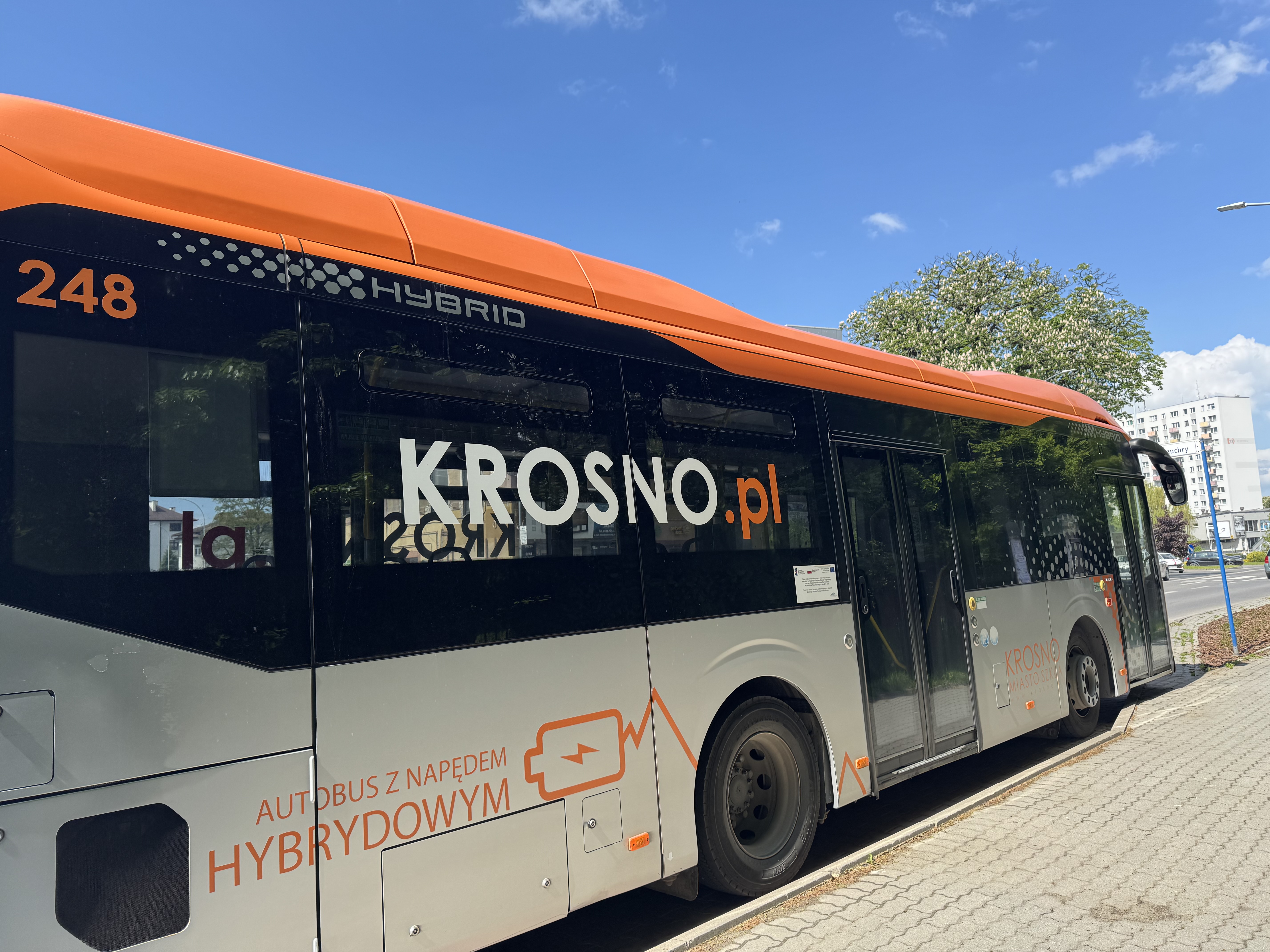
A bus in Krosno, Poland, May 2025
As mid-May 2025 arrives, I continue to enjoy my time in southern Poland, relishing the slower rhythm of home, the gentle landscapes, and the quiet anticipation of welcoming my Venezuelan friend Leo, who will soon be arriving from Spain. These days have been a gift—calm, nourishing, and full of small joys.
The weather has been particularly kind. It’s not hot—just pleasantly mild—with long hours of daylight, bursts of sunshine, and occasional rain showers that lend the air a soft, romantic quality. The greenery around Nowy Sącz is intense and fresh, the kind that only exists in spring. Trees are in full bloom, rivers flow high, and the scent of lilacs and damp earth carries on the breeze.
In this serene atmosphere, I’ve taken the opportunity to revisit some of my favourite local places and to explore a few forgotten ones. A few days ago, I returned once again to Miasteczko Galicyjskie in Nowy Sącz—one of the region’s most charming historical sites. And then, almost on a whim, I decided to head east and visit Krosno, a town I hadn’t set foot in for many years. The trip turned out to be a delightful surprise.
Miasteczko Galicyjskie – A Living Time Capsule
The Galician Town (Miasteczko Galicyjskie) in Nowy Sącz is a remarkable open-air museum, part of the Ethnographic Park that recreates the life and architecture of a 19th-century Galician town—a region that once formed the easternmost crown land of the Austro-Hungarian Empire. Walking through its cobbled streets is like stepping into a different time.
The town is composed of historically accurate wooden and brick buildings: a town hall, an inn, a post office, a barber’s shop, artisan workshops, and typical townhouses from across the former Galicia region. It’s a place that blends education with charm, offering visitors a tangible sense of how our ancestors lived, worked, and socialised. As always, I loved wandering through it—imagining conversations in Yiddish, Polish, and German; imagining horses trotting through the square and candles flickering behind small-paned windows.
It’s a site I return to often because it reminds me of the complexity of our local heritage—Polish, Jewish, Lemko, and Hungarian threads all woven together in what was once a vibrant multicultural tapestry. The Galicia of memory may be gone, but places like this help keep its spirit alive.
A Journey to Krosno – A Forgotten Gem Rediscovered
I hadn’t been to Krosno in years—so long, in fact, that I could hardly remember what it looked like. My expectations were modest, but as I entered the town and began to explore, I found myself genuinely impressed—even moved—by what I discovered.
Krosno, often called the “Glass City,” is located in the Subcarpathian region and has a history that stretches back to the Middle Ages. Once a thriving trade centre on the Hungarian route, Krosno developed a reputation for craft, commerce, and learning. In modern times, it became world-famous for its glass manufacturing, and its products are still exported around the globe.
But what captivated me most was the Old Town, which has undergone excellent restoration. The main square is beautifully preserved, with pastel façades, arcaded buildings, and the proud Tower of the Parish Church rising at the centre. The renovation has been done with care, preserving the character of the town without making it feel artificial or “overdone.” There’s authenticity in the details—old signs, cobblestone alleys, flower boxes, and the sound of church bells echoing off the stone.
Getting there was half the pleasure. The drive from Nowy Sącz took me through a series of winding roads and picturesque villages and small towns—each with its own rhythm and charm. Wooden churches, quiet meadows, roadside shrines, and sleepy town squares reminded me of how scenic and soul-stirring the Polish countryside can be when taken slowly.
Looking Ahead
As I write this, I’m feeling very grateful—for the calm of these days, for the beauty I’ve been able to rediscover, and for the time I’ve had with Mum, family, and close friends. And of course, I’m especially excited about Leo’s upcoming visit. I can’t wait to share some of this beauty with him, to show him the mountains, the towns, and the life here that feels so rooted and grounded. I know he’ll love it.
There’s still more time left in this holiday, and I plan to savour every remaining moment: more local excursions, more shared meals, more quiet walks, and meaningful conversations. After all the movement and distant places, these days close to home feel just as important—if not more so.
Click here to access the album.
Early Summer Days in Nowy Sącz, Cieszyn, Český Těšín & Žilina 🇨🇿🇸🇰🇵🇱🇪🇺
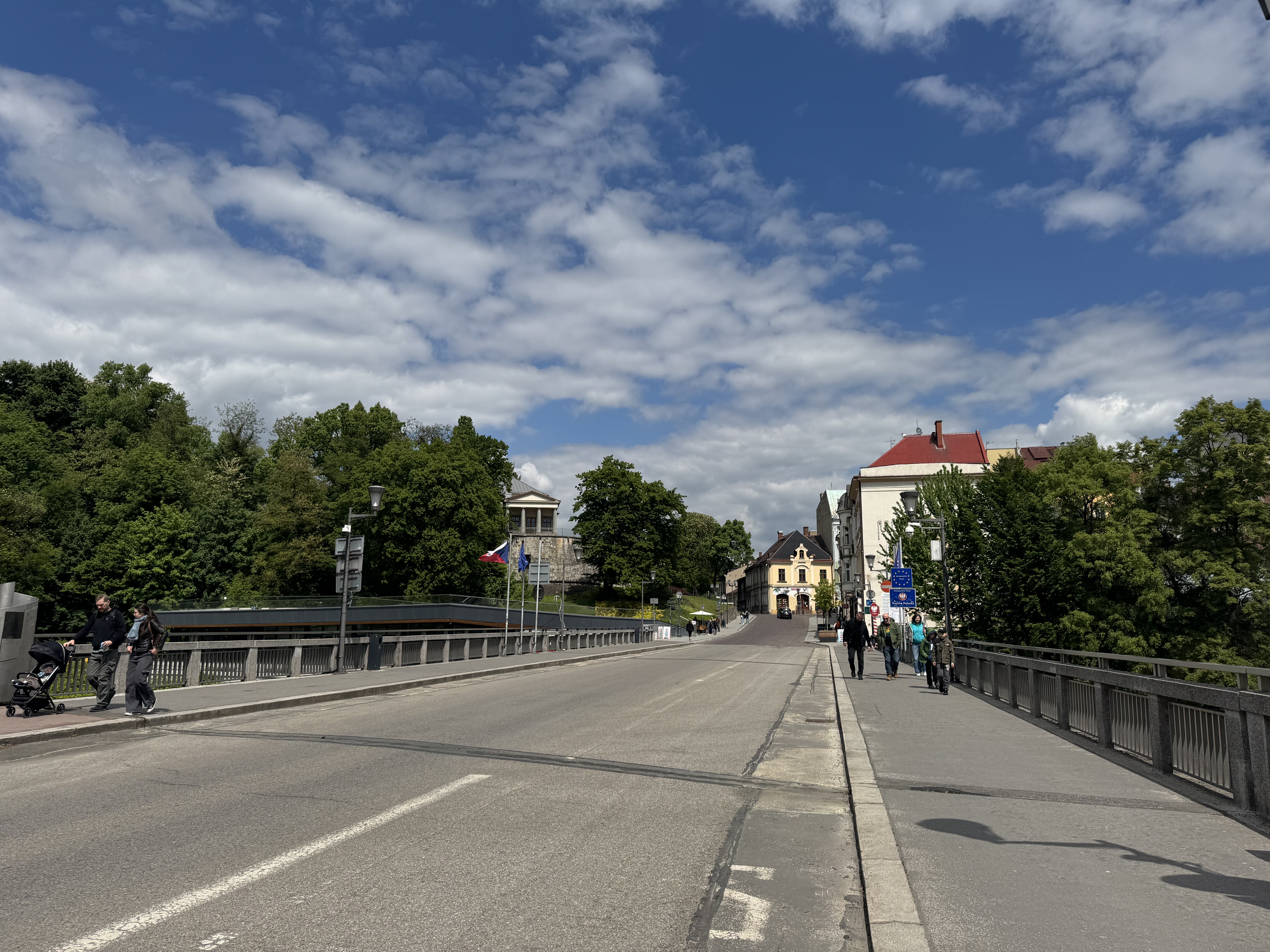
The Friendship Bridge connecting Cieszyn with Český Těšín, Poland & Czechia, May 2025
After the excitement of our travels to Malta, Uzbekistan, and Kazakhstan, I’ve been enjoying some quieter, grounding time back home in Nowy Sącz. The weather has cooled down a bit—refreshing and gentle, perfect for small adventures and moments of reconnection. There’s a certain peace that comes with returning to familiar places, especially after a whirlwind of discoveries.
This week, I made sure to spend quality time with my brother and his family at their home in Nowy Sącz. We caught up, shared stories, and as a small token from Venezuela, I brought them a bottle of Venezuelan rum—a gift carefully chosen by my dear friend Giovanni. Sharing it felt like connecting two different parts of my world, and it was warmly received.
A Day Trip Across Borders – Cieszyn & Český Těšín
Yesterday, Mum and I, together with our lovely neighbours, set out on a spontaneous road trip to the border city of Cieszyn, which straddles Poland and the Czech Republic. Cieszyn has always fascinated me, not just for its charm, but for its layered, often complex history.
Originally a single city, Cieszyn was divided in 1920, after the fall of the Austro-Hungarian Empire and a territorial dispute between the newly formed Second Polish Republic and Czechoslovakia. The conflict, known as the Polish–Czechoslovak War, ended in arbitration, splitting the city along the Olza River. Today, Cieszyn lies in Poland and Český Těšín in the Czech Republic. Despite the physical separation, the two towns remain closely intertwined, culturally and socially. It’s a striking example of how borders can divide spaces but not necessarily people.
We began our walk on the Polish side, taking in the beauty of the historic market square, the Piast Tower, and the peaceful Olza riverbanks. Crossing the border on foot into Český Těšín felt seamless—no checkpoints, just a symbolic crossing into another chapter of shared heritage.
In Český Těšín, we had a delightful lunch at a local restaurant, where we sampled dumplings filled with bryndza—a creamy sheep cheese that’s beloved in this region. Mum and our neighbours also tried some excellent Czech beer, brewed with the care and tradition that the Czech lands are so rightly proud of. The meal was unpretentious, comforting, and truly satisfying—another reminder that simple pleasures often leave the strongest impressions.
Through Czechia and Slovakia – A Stop in Žilina
Instead of heading straight back, we chose a scenic return route through Czechia and Slovakia, which allowed us to stop in Žilina, a small city nestled in the north-western part of Slovakia. Žilina, located near the confluence of the Váh, Kysuca, and Rajčanka rivers, is a city with a long and intriguing history.
First mentioned in 1208, Žilina grew over centuries as a market town and later an industrial hub under Austro-Hungarian rule. Though modest in size, the city boasts a beautifully preserved Old Town, with a central square framed by arcaded houses and the striking Church of the Holy Trinity. We enjoyed a short but rewarding walk, followed by drinks at a relaxed outdoor café—watching locals go about their evening routines in the golden light of early summer.
The drive from Žilina back to Nowy Sącz was simply spectacular. As we wound our way through the mountains, we were treated to panoramic views of the Tatras, their peaks still dusted with snow, even in May. The landscape shifted between deep forests, green meadows, and dramatic rock formations—a visual feast that reminded us of how truly beautiful this corner of Europe is.
We reached home around 21:00, tired but happy, our heads filled with impressions from the day. It was the kind of trip that balances discovery with simplicity—a local adventure, shared with people we care about, rich in conversation and full of unexpected delight.
Click here to access the album.
